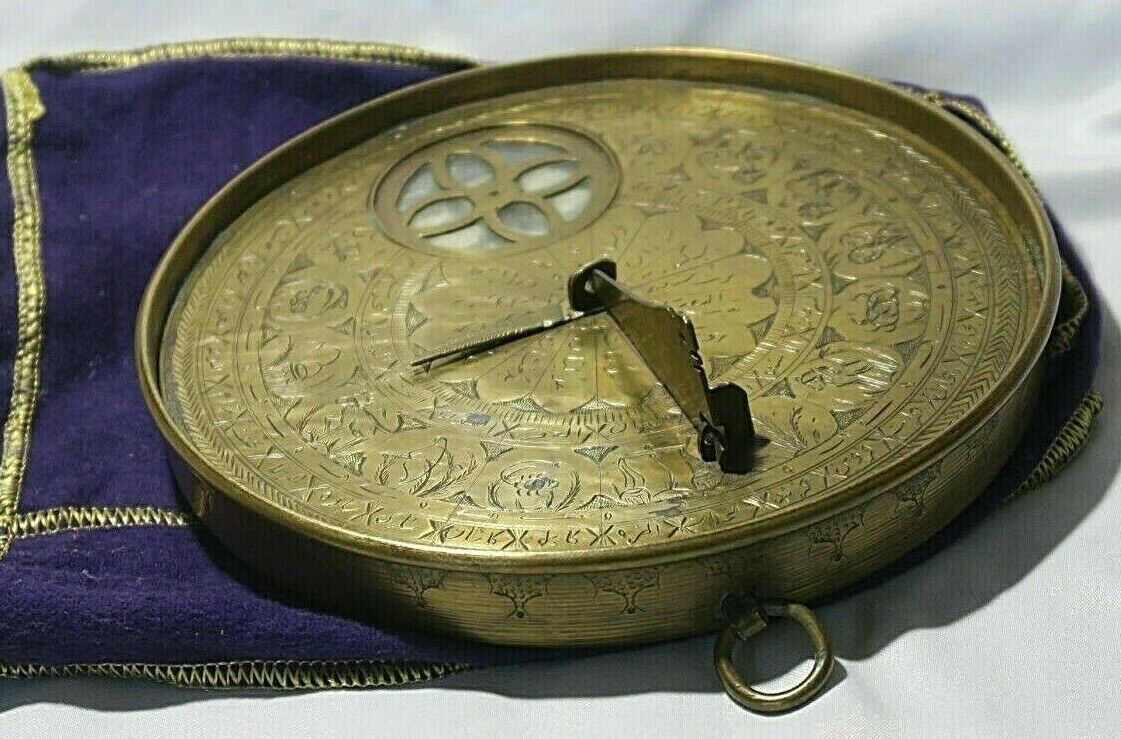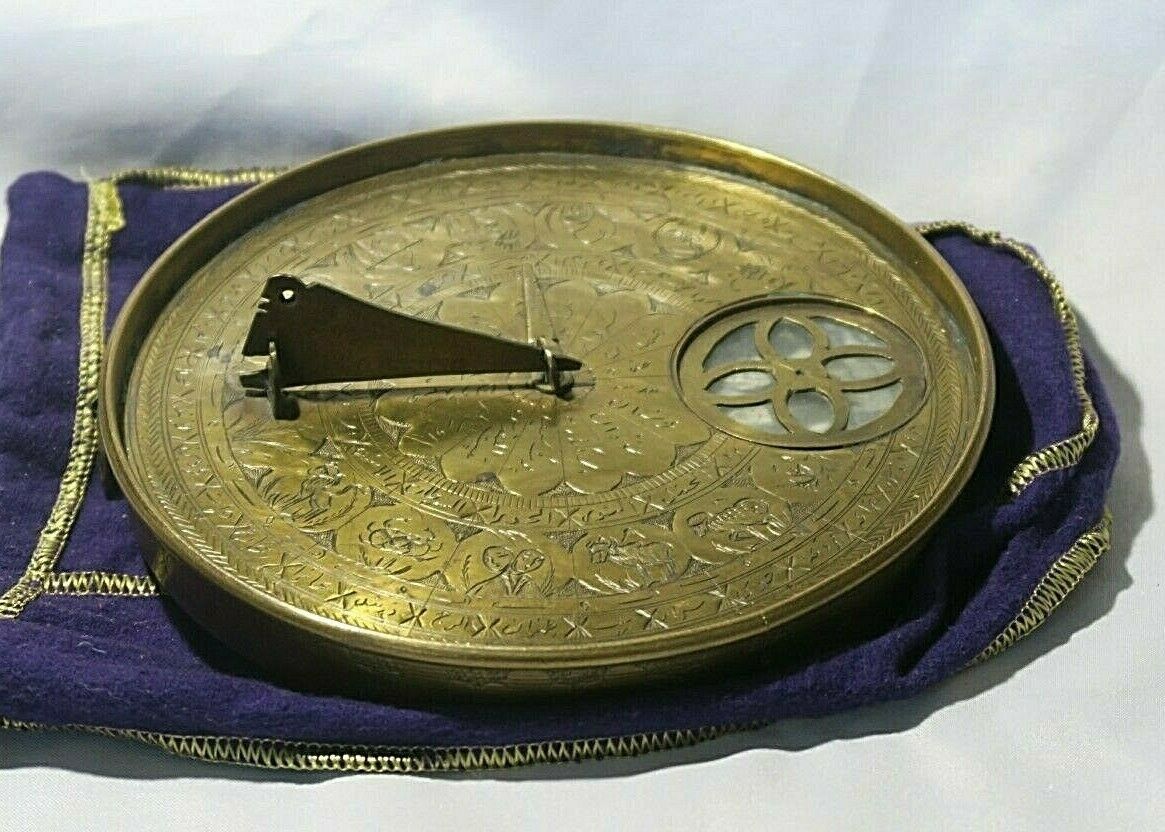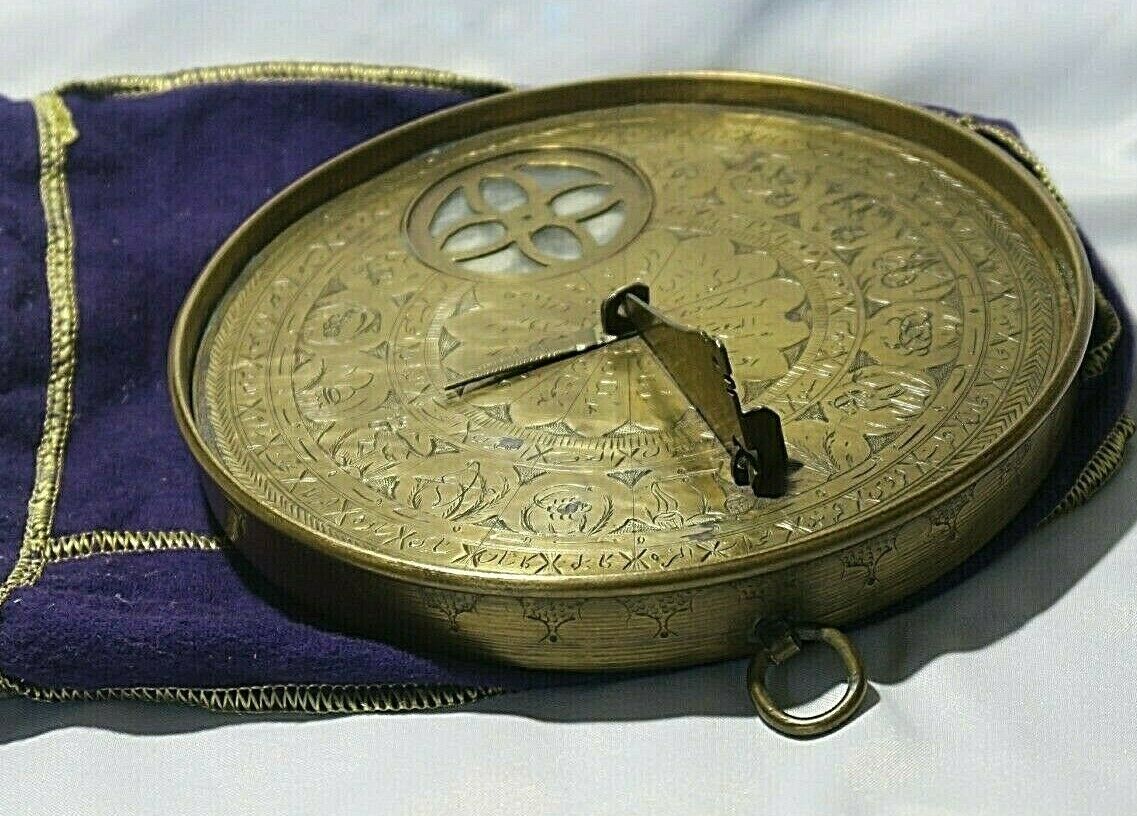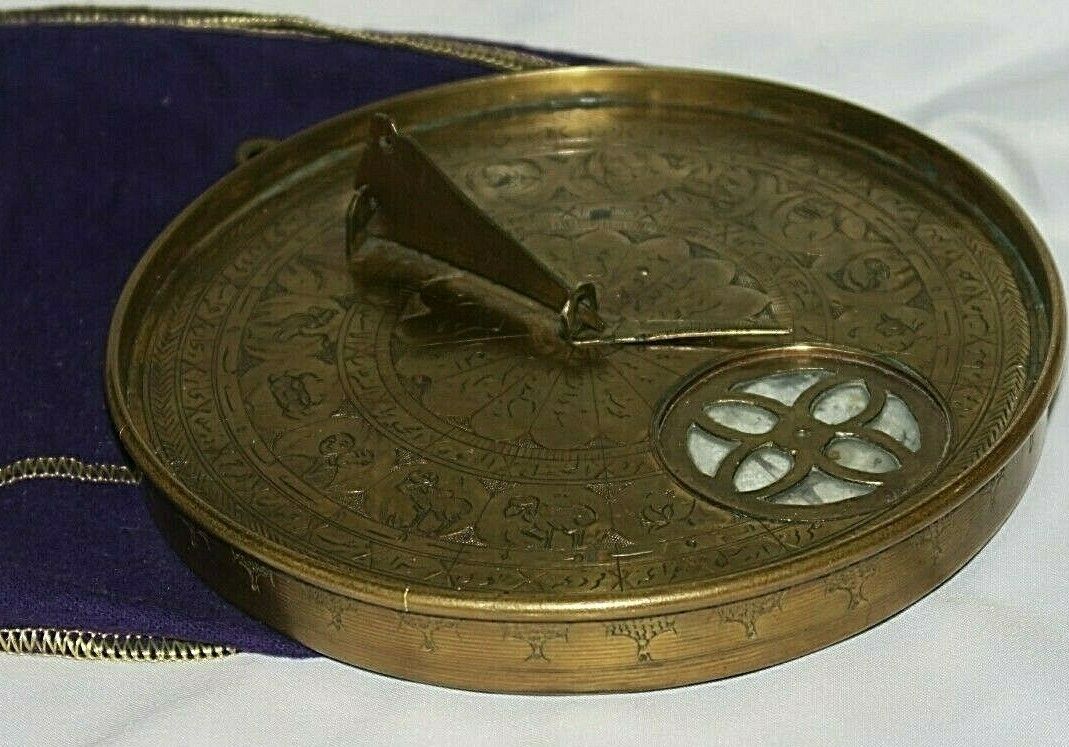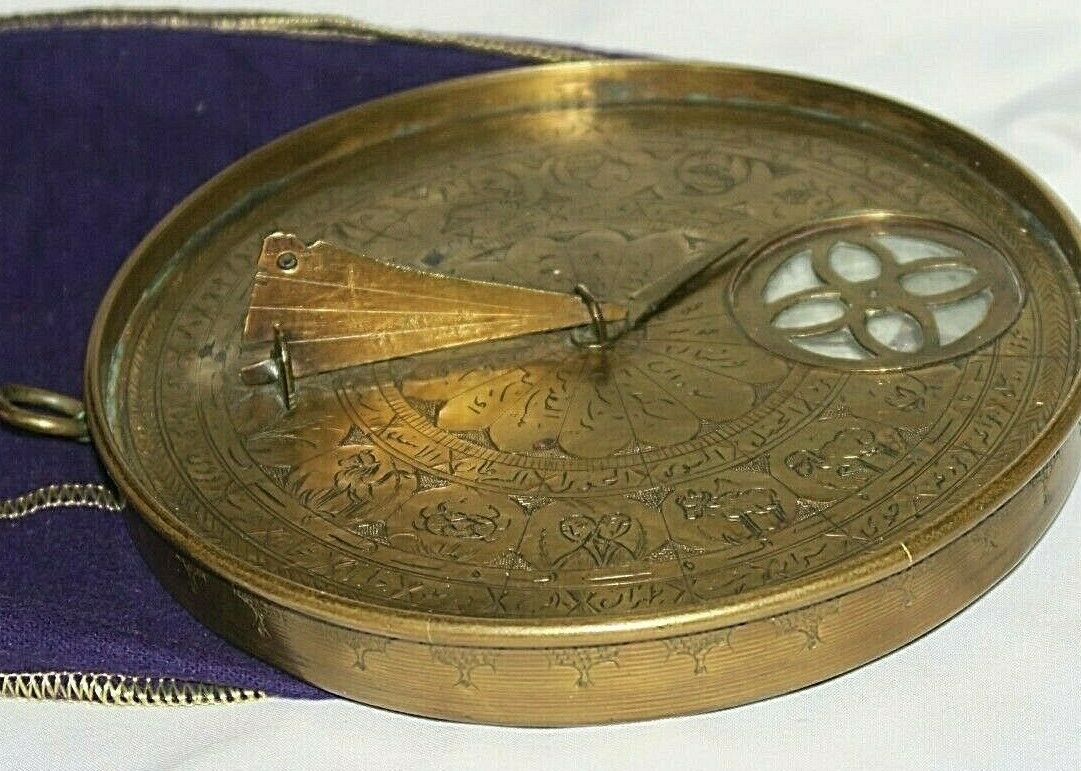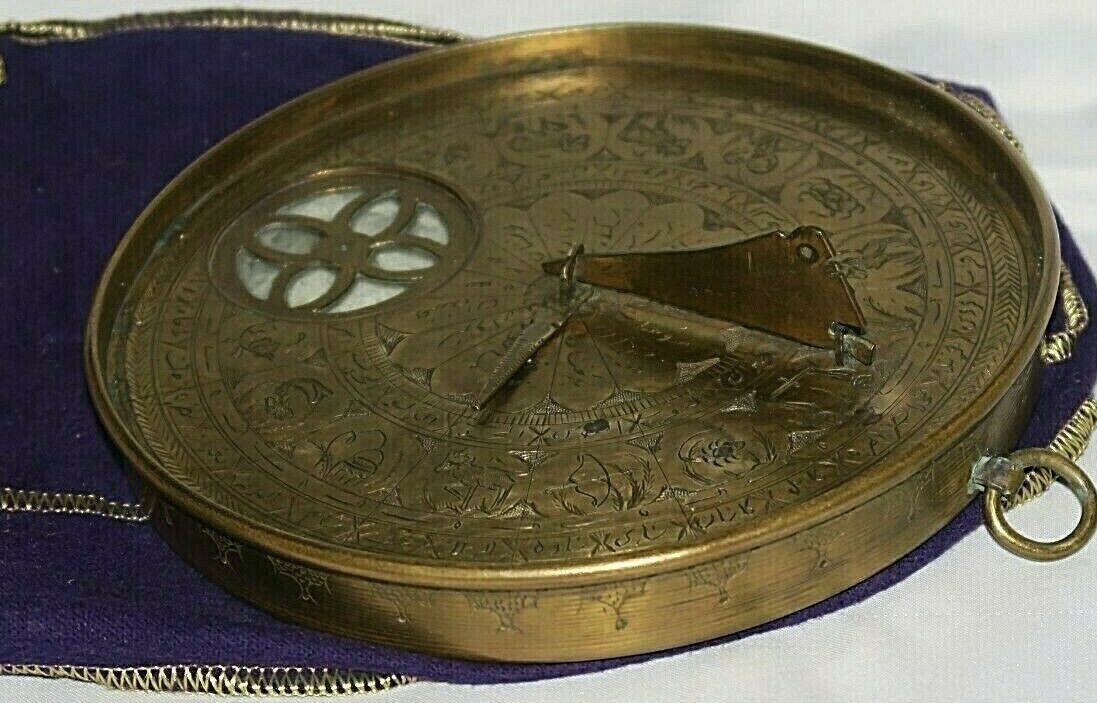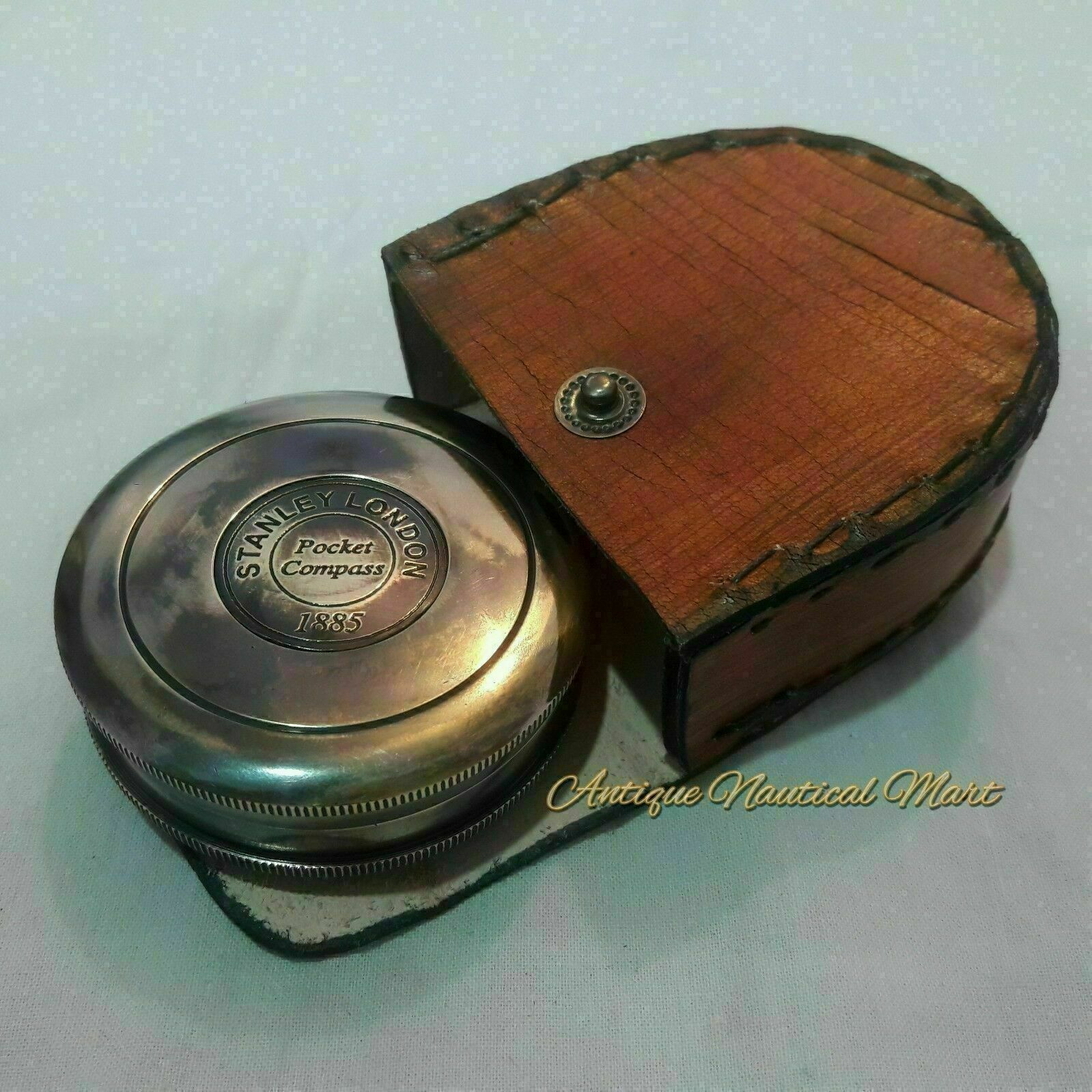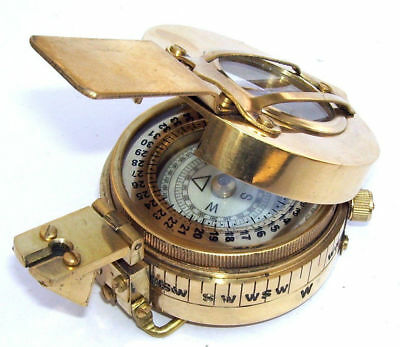-40%
Rare Antique Persian Bedouin Islamic Astrolabe Sundial Compass Circa 1700s
$ 1029.07
- Description
- Size Guide
Description
Here we have for sale is this outstanding collectable antique brass BEDOUIN ASTROLABE, signed by the maker, with zodiac engraving all over the front of this instrument measuring 6 5/8" in diameter.This antique QAJAR QIBLA ENGRAVED BRASS SUNDIAL COMPASS is PERSIAN ARABIC ISLAMIC in origin or provenance.
Historically, each Bedouin Tribe Master had one of these astrolabes help him navigate either on land (at night) or in water.
Notice: Be aware that other merchants (some from India), are selling fake imitations. This is a genuine antique!. Remember - Fake news and fake antiques are fakes!
This old antique QAJAR engraved brass sundial/compass astrolabe is guaranteed to be an authentic antique. Astrolabes are dated at 570 AD to coincide with the birth of Mohammad which was 570 AD. We believe the vintage or circa is about early 18th century.
The tribe master looked up at the stars for the big dipper. After finding the big dipper, he followed the handle which pointed to the north star. Having found the north star, he then knew which way was north. He always used the instrument at night because it was too hot during the day, and the big dipper and the north star was not visible during daylight hours.
The BEDOUIN Astrolabe is a historical astronomical instrument used by classical astronomers and astrologers. Brass astrolabes were developed in much of the eastern world, chiefly as an aid to navigation and as a way of finding the qibla, the direction of Mecca. In the Islamic world, astrolabes were used to find the times of sunrise and the rising of fixed stars, to help schedule morning prayers.
It was the chief navigational instrument until the invention of the compass and sextant. Its many uses included locating and predicting the positions of the sun, moon, planets and stars; determining local time given the local longitude and vice-versa; surveying, and triangulation. Astrologers of European nations used astrolabes to construct horoscopes. In the Islamic world, they are and were used primarily for astronomical studies, though astrology was often involved there as well.
The astrolabe was introduced to the Islamic world the mid-eighth century. The astrolabe was fully developed during the early centuries of Islam. Arab treatises on the astrolabe were published in the ninth century and indicate a long familiarity with the instrument (the oldest existing instruments are Arabic from the tenth century, and there are nearly 40 instruments from the 11th and 12th centuries). The astrolabe was inherently valuable in Islam because of its ability to determine the astronomically defined prayer times and as an aid in finding the direction to Mecca (the qibla). It must also be noted that astrology was a deeply imbedded element of early Islamic culture and astrology was one of the principle uses of the astrolabe.
Many old astrolabes had astrological features that would allow the user to determine horoscopes. Creating a horoscope requires knowledge of the positions of the planets and the ecliptic for a certain date and time. The astrologer interprets the aspects to advise his client. The astrolabe was a convenient way to determine a horoscope because much astrological stress was placed on the position of the ecliptic. Of particular interest were the ecliptic degree on the eastern horizon (the ascendant), the ecliptic degree on the western horizon (the descendent) and the ecliptic degree on the meridian (the degree of mid-heaven). In use, the astrolabe is set to the time and date of interest (birth, death, coronation, etc.) and the ecliptic degrees are read directly. The astrolabe could be used to find the "house" occupied by a planet, but an ephemeris was required to find the planetary coordinates for a date.
Provenance: Christie's, May, 1987.
Please note that many look a lights are copies or reproductions of this original astrolabe and are sold by counterfeited sellers from China and/or India. Beware!
Ref: Hill. H.OL. & Paget E.W. Tomlinson: 'Instruments of Navigation, London,1958
Ward.F.A. B. 1981 'A Cat. of European Scientific Instruments in the Dept. of Medieval & Later Antiquities of the British Museum, London.
Astrolabes of the World, Robert T. Gunther, The Holland Press.
Please look at the picture and read the description, which form a part of the condition description. What you see and what you read is what you are buying.
We ship internationally and exclusively use the USPS. Please contact sellers for the shipping charge to your specific street address and country.
ALL international shipments and high priced items require insurance.
This antique compass/sundial would make a wonderful addition to any scientific instrument, astrolabe or sundial collection when displayed in a prominent place, being a grand collectible item that would adorn any serious collector's prized scientific instrument and sundial accumulations, while showing a discriminating dedication for fine sundials and other scientific instrument items as well as a devotion to acquiring fine collectibles.
Please email sellers for purchasing, payment, shipping arrangements, requests for more photos, as well as any other inquiries.
Buyers should appreciate that the Customs Department of their country may impose duties, taxes and/or other charges on your purchase as it enters your country, which expenses are not part of the purchase price and become the sole responsibility of the purchaser.
Please mouse over each image to view high resolution photos.
Returns : Returns are accepted ONLY if the item was not the item described and or photographed.
International Buyers - Please Note :
* Import duties, taxes and charges are not included in the item price or shipping charges. These charges are the buyer's responsibility.
* Please check with your country's customs office to determine what these additional costs will be prior to bidding/buying.
* These charges are normally collected by the delivering freight (shipping) company or when you pick the item up - do not confuse them for additional shipping charges.

